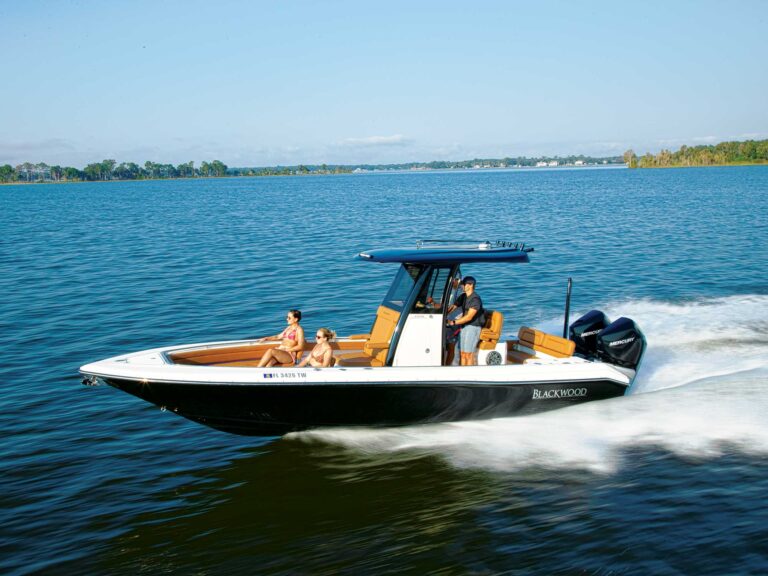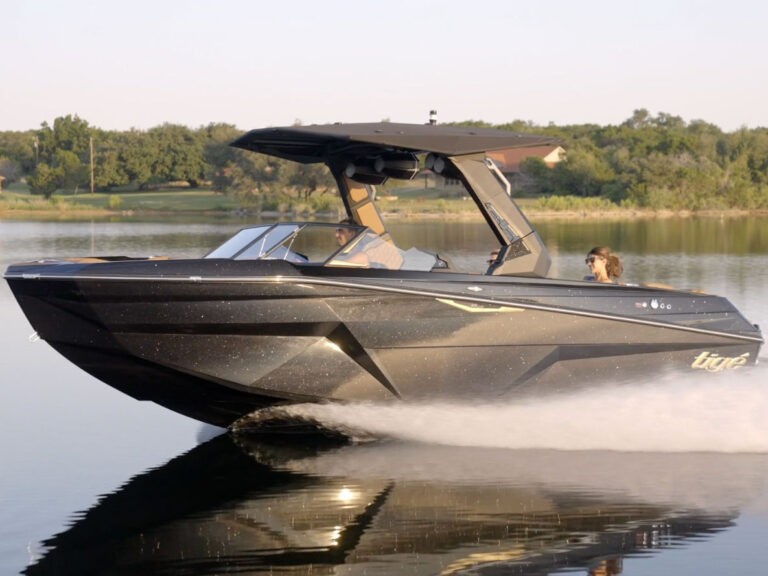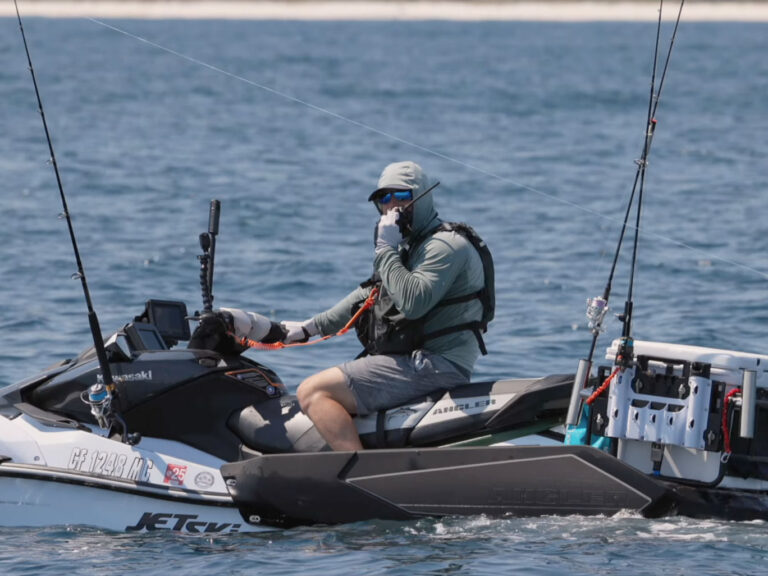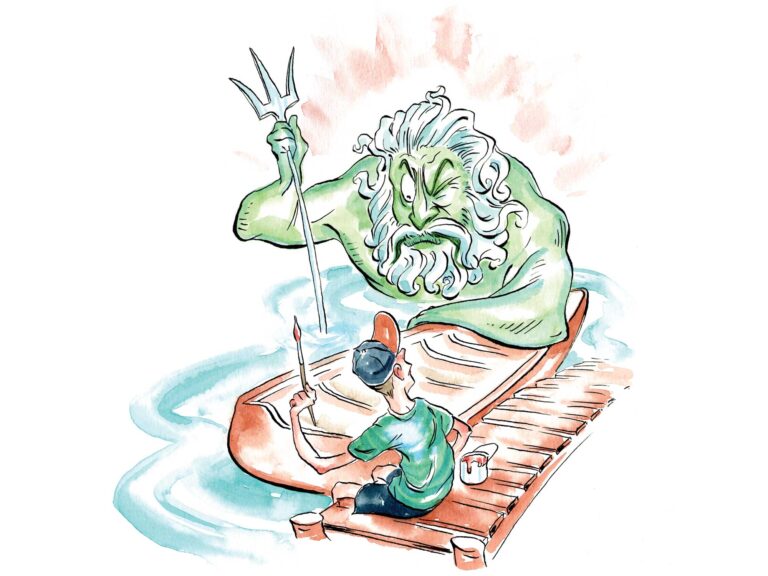Why do boats sink? The short answer — they have too much water in them — might be flippant, but it’s true. Whether that water comes from hitting a rock, blowing an exhaust hose, or forgetting the drain plug (yeah, it happens — a lot), if you slow flooding below what bilge pumps can handle, you won’t sink. Easier said than done? Not really. Try these surprisingly simple solutions from Sea Tow captains who respond to more than 800 calls of sinking boats each year.
Get Help From On and Off Your Boat
Sea Tow and TowBoatU.S. vessels typically bring 20,000 gallons per hour of pumping capacity, air bags with thousands of pounds of buoyancy to lift sinking boats, and tools and materials to patch holes. But they have to find you. If you, alone, have to slow the leak and man the radio, you’re sunk, maybe literally. “The most experienced person aboard usually deals with the problem,” says Capt. Eric Dussault of Sea Tow Central Connecticut. “Make sure someone else can work the radio, give your GPS position and use the life raft and EPIRB if it comes to that.” GPS alone won’t identify your boat in a crowded harbor, so the designated radio person might have to describe your boat and nearby landmarks, give the Sea Tow skipper a compass bearing to his red-and-yellow flashing light, or even light a locator flare. Practice those skills at least once every spring.
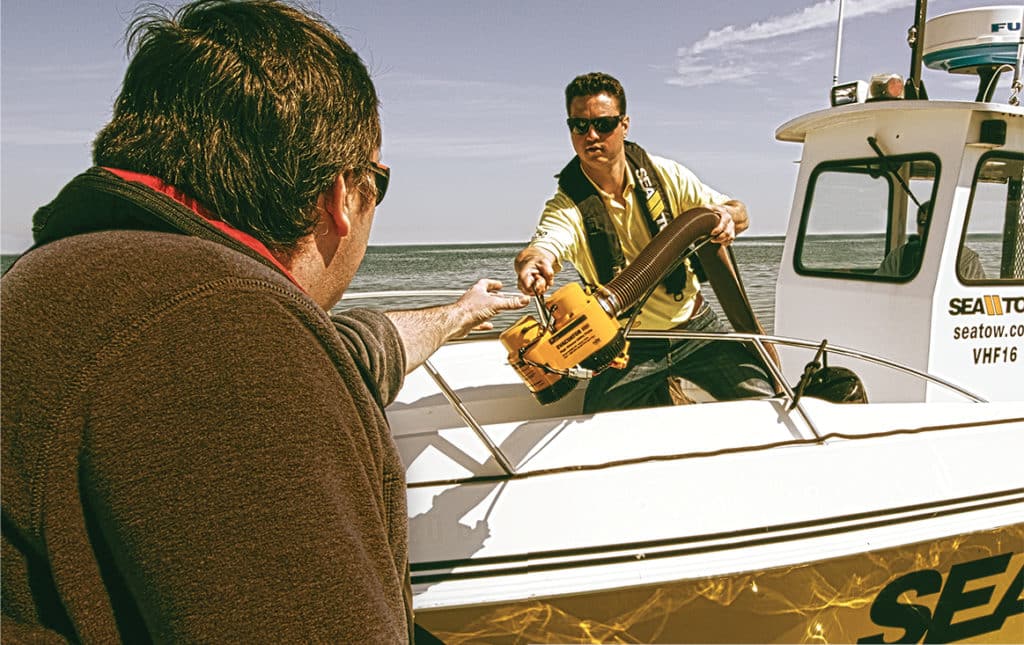
Seconds Count
A 2-inch-diameter hole 6 inches below the water lets in about 55 gallons of water per minute. That same hole 2 feet below the water lets in 110 gallons per minute. “With every second that passes and every gallon of water that enters the boat, the flooding gets faster,” says Capt. Mike Langenbach of Sea Tow Huntington, Long Island. Finding the leak and slowing the water keeps your crew dry longer. Just identifying the source makes salvors more effective when they get there — finding a hole gets hard once there is 3 feet of water sloshing in the bilge. “The average 30-foot boat has a dozen holes in it — rudder posts, inboard-outboard bellows or inboard shaft seals, through-hull fittings, transducers. Know where they all are,” Langenbach says. “Also know each compartment or hatch where you can see the inside of your hull.”
Understand the Situation
Langenbach says he often hears radio calls of a boat on fire and taking on water, but it’s unlikely for both to happen at exactly the same time. “When an engine cooling hose fails, the engine is pumping seawater into your boat, so you’re sinking. If it sprays onto an overheated engine or exhaust parts, it turns to steam. Turn the engine off and both problems stop,” he says. Steam is usually white. Black smoke is more indicative of fire.
Similarly, when a bilge pump discharge hose fails, a glance in the bilge might look like water flowing in as fast as it pumps out. Check overboard discharges to know. Check pumps before leaving the dock too. Many boaters panic offshore when they discover a week’s worth of rainwater in the bilge left over from an inoperative bilge pump.
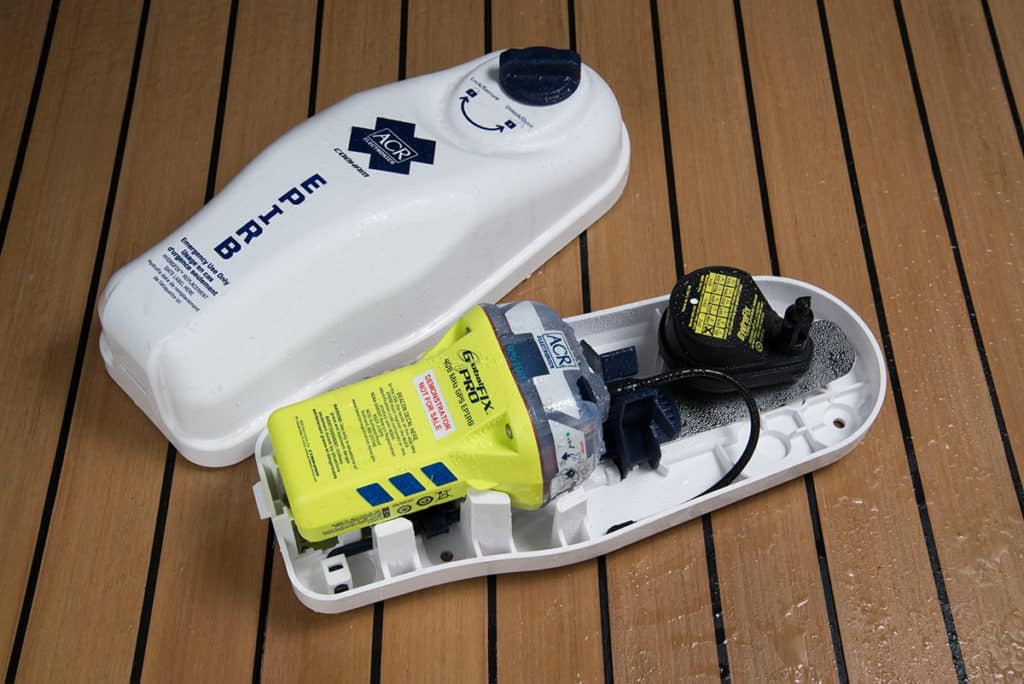

Bimetal saw
3-pound sledge
Pry bar
Pipe wrench
Flashlight
Knife
Self-drilling screws
Drill bits
Cordless drill
A cordless screwdriver is another important tool. (Sea Tow captains use pneumatic drills underwater and prefer hex-head screws turned by a socket driver.) Capt. Vincent Daniello

Find the Leak
“We ask questions,” Dussault says. “Did it feel like you hit something? Did the motor stop when you did? Were you in shallow or deep water?” Answers help salvors find leaks — and should help you. “If you hit a big log or a submerged rock, you’re going to know it,” Dussault says. A bang along with a shudder you feel in your feet might make you look forward for a hole, but if a motor stalled at the same moment, the running gear hit hard, so check around the rudder or prop shaft. If everything seems fine while running out but flooding starts inexplicably when you slow down, check the transom drain plug. Water flows out the drain while the boat is on plane; the boat starts sinking once you stop.
“If you’re not sure, look at every part of the boat that moves,” Langenbach says. That means check shaft, rudder or sterndrive seals to start, and then around engines, generators and air-conditioners. “Look, listen and feel until you find running water,” he says.

Eric Dussault likes Nerf balls. “Get the soft, squishy classic Nerfs, not the hard foam or fluted ones. Cut a piece and squeeze it into the hole or use a lot of little pieces to fill cracks.” Mike Langenbach prefers swim noodles over Nerfs, and also toilet bowl wax ring seals. “Smear the wax on the crack. It’s quick and it seals underwater.” Wax rings from home stores are cheap, but they’re messy when stored in summer heat, and some work better than others. A tub of Stay Afloat (stayafloatmarine.com) works like the best wax rings, and it’s easier to store and use. Will Beck starts with whatever he finds aboard. “Wedge something diagonally across a big hole; maybe wrap a towel around a hardcover book. Then pack around it with bedding, pillows, whatever fits.” He uses flotation packets from within discarded life jackets, sometimes even pouring loose life jacket filling into a towel or pillowcase to mold to unusual shapes. Capt. Vincent Daniello

Forespar foam plug quickly fits to irregular holes of varying sizes.
Great Stuff spray foam — used to insulate cracks in a home — works well for stopping leaks.
Water noodle fits into cracks similar to Nerf into holes.
Oil-absorbent pads don’t absorb water, so they work well to seal holes, as do foam cushions and throwable PFDs.
Hardwood plugs fit broken through-hull fittings. Or shove one in a busted hose and clamp it with a hose clamp.
Stay Afloat wax or a toilet bowl wax ring from a home store seals holes.
Duck Tape (the brand shown here) is handy for quick repairs. Capt. Vincent Daniello



We covered a hole in a hull using Stay Afloat, which is similar to toilet bowl seal wax but is nontoxic, environmentally friendly and easier to spread and store. Put it directly on cracks and gaps or use it to help seal makeshift patches across larger holes. Boating Magazine

Know When to Quit
Many boats built with flotation won’t completely sink, but that doesn’t mean they’re safe to be aboard. “When they take on enough water, boats often roll over,” says Capt. Will Beck of Sea Tow Palm Beach. That’s especially true of boats with lots of foam flotation. Once flooded, many of these turn turtle because the foam’s buoyancy makes them want to come up. “Mark a bulkhead or pick a point at water level to know if pumps are gaining or losing.” Water inside the boat shifts its weight as each wave passes. “When water sloshes side to side, the boat rolls with a wave but doesn’t snap back up right away,” Beck says. If you feel that logy, sluggishly recovering motion, “you’ve got to get out” or risk being trapped inside. Also get off and away from a boat that is close to sinking or rolling. The old adage about always stepping up into a life raft costs lives.
When All Is Lost
Abandoning your boat doesn’t mean it’s gone. “If it’s too unstable, I’ll let it flip, tow it upside down to calm water, and then flip it back upright,” Dussault says. “If it’s going to sink all the way, I’ll hook a 2,000-pound lift bag on the bow and tow it like that.” Sure, a flooded boat isn’t a win, but insurers get something to salvage and mitigate costly environmental damage from leaking fuel. Looking at the bright side, you’ll get some of your stuff back, you’ll have a really good sea story, and you can say you kept enough water out that it never did actually sink.





